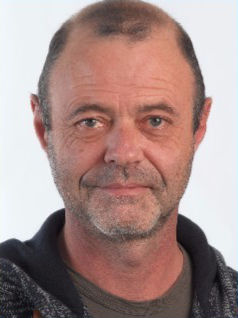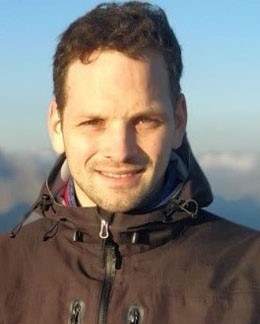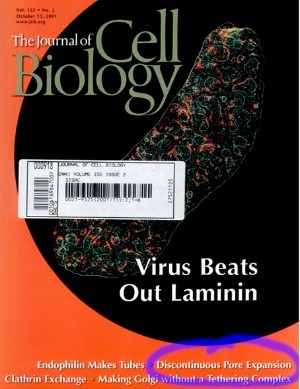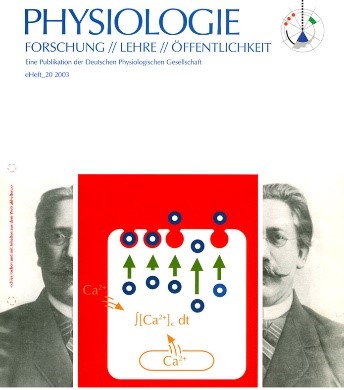Research Group Thomas Haller
Group/personal information:
Group leader: Thomas Haller
Location: Schöpfstr. 41/1st floor, R030
Email: Thomas.Haller@i-med.ac.at
Phone: +43 (0) 512 9003 70807
ORCID: orcid.org/0000-0001-9147-4081
Google Scholar: https://scholar.google.com/citations?user=CcUzm4sAAAAJ&hl=de
ResearchGate: https://www.researchgate.net/profile/Thomas-Haller-3/researc

Scientific interests:
We initially focused on Ca2+ storage and signaling in various epithelial cells. Later, our attention shifted to lung alveolar type II cells, an excellent model for studying Ca2+-regulated secretion. Our research expanded to include biophysics of surfactant at the air-liquid interface, investigating general mechanisms of exocytosis, in particular pre- and postfusion events, and alveolar epithelial cell physiology in general. We utilized optical and fluorescence techniques, such as flash photolysis, laser tweezers or interferometry, along with AFM, EM, SEM or confocal Raman microscopy. Additionally, we introduced novel tools, including equibiaxial stretch devices to mimic lung distension, inverted air-liquid interfaces to simulate the complex alveolar microenvironment, and polarization microscopy for intracellular lipid organization. These studies provided insights into alveolar biology, summarized in internal and external reviews. Ongoing investigations involve vectorial drug transport and drug sequestration by alveolar type II cells, potentially redefining the lung's role as an excretory organ for lipophilic compounds and a target for specific drugs. Our current work also examines O2 transport by red blood cells, with focus on hemoglobin's role in modulating O2 transfer in the human body. In this respect, we delve into novel aspects of O2 transport in contexts like high altitude, accidental hypoxemia, relevant clinical interventions and pharmacological modulations. Future projects aim to integrate the newly developed methods for oxygen dissociation measurement as a routine analytical service in clinical practice.
Current research topics:
Physiological and pharmacological modulation of oxygen binding by hemoglobin
Main methodologies:
- Advanced microscopic techniques
- High throughput oxygen dissociation measurements
Current lab members:
 Nobert Mair
Nobert Mair
 Simon Woyke
Simon Woyke
PhD students:
Christoph Frisch
Lucas Lesser
Technical support:
None
Funding sources:
None
Current (international) Collaborators:
Prof. Dr. Peter Kotanko (Director Renal Research Institute, New York)
Prof. Dr. Jesus Perez-Gil (Director Department of Biochemistry, Universidad Complutense, Madrid)
Prof. Dr. Paul Dietl (Director Institute of General Physiology, University of Ulm)
Prof. Dr. Hermann Brugger (Director Institute of Mountain Emergency Medicine, Eurac Research, Bolzano)
Prof. Dr. Paul Jennings (Director Division of Molecular and Computational Toxicology, University of Amsterdam)
Selected publications:
1.) Haller T, Dietl P, Deetjen P, Völkl H. The lysosomal compartment as intracellular calcium store in MDCK cells: a possible involvement in InsP3-mediated Ca2+ release. Cell calcium 1996; 19: 157-65.
2.) Haller T, Ortmayr J, Friedrich F, Völkl H, Dietl P. Dynamics of surfactant release in alveolar type II cells. Proceedings of the National Academy of Sciences 1998; 95: 1579-84.
3.) Haller T, Dietl P, Pfaller K, Frick M, Mair N, Paulmichl M, Hess MW, Fürst J, Maly K. Fusion pore expansion is a slow, discontinuous, and Ca2+-dependent process regulating secretion from alveolar type II cells. The Journal of Cell Biology 2001; 155: 279-90.
4.) Haller T, Dietl P, Stockner H, Frick M, Mair N, Tinhofer I, Ritsch A, Enhorning G, Putz G. Tracing surfactant transformation from cellular release to insertion into an air-liquid interface. Am J Physiol-Lung C 2004; 286: L1009-L15.
5.) Bertocchi C, Ravasio A, Bernet S, Putz G, Dietl P, Haller T. Optical measurement of surface tension in a miniaturized air-liquid interface and its application in lung physiology. Biophysical journal 2005; 89: 1353-61.
6.) Dietl P, Haller T. Exocytosis of lung surfactant: from the secretory vesicle to the air-liquid interface. Annu Rev Physiol 2005; 67: 595-621.
7.) Miklavc P, Frick M, Wittekindt OH, Haller T, Dietl P. Fusion-Activated Ca2+ entry: An “active zone” of elevated Ca2+ during the postfusion stage of lamellar body exocytosis in rat Type II Pneumocytes. PLoS One 2010; 5: e10982.
8.) Miklavc P, Mair N, Wittekindt OH, Haller T, Dietl P, Felder E, Timmler M, Frick M. Fusion-activated Ca2+ entry via vesicular P2X4 receptors promotes fusion pore opening and exocytotic content release in pneumocytes. Proceedings of the National Academy of Sciences 2011; 108: 14503-08.
9.) Ravasio A, Hobi N, Bertocchi C, Jesacher A, Dietl P, Haller T. Interfacial sensing by alveolar type II cells: a new concept in lung physiology? Am J Physiol-Cell Ph 2011; 300: C1456-C65.
10.) Woyke S, Ströhle M, Brugger H, Strapazzon G, Gatterer H, Mair N, Haller T. High‐throughput determination of oxygen dissociation curves in a microplate reader—A novel, quantitative approach. Physiological Reports 2021; 9: e14995.
Full publication list:
ORCID: orcid.org/0000-0001-9147-4081
Journal Covers:





